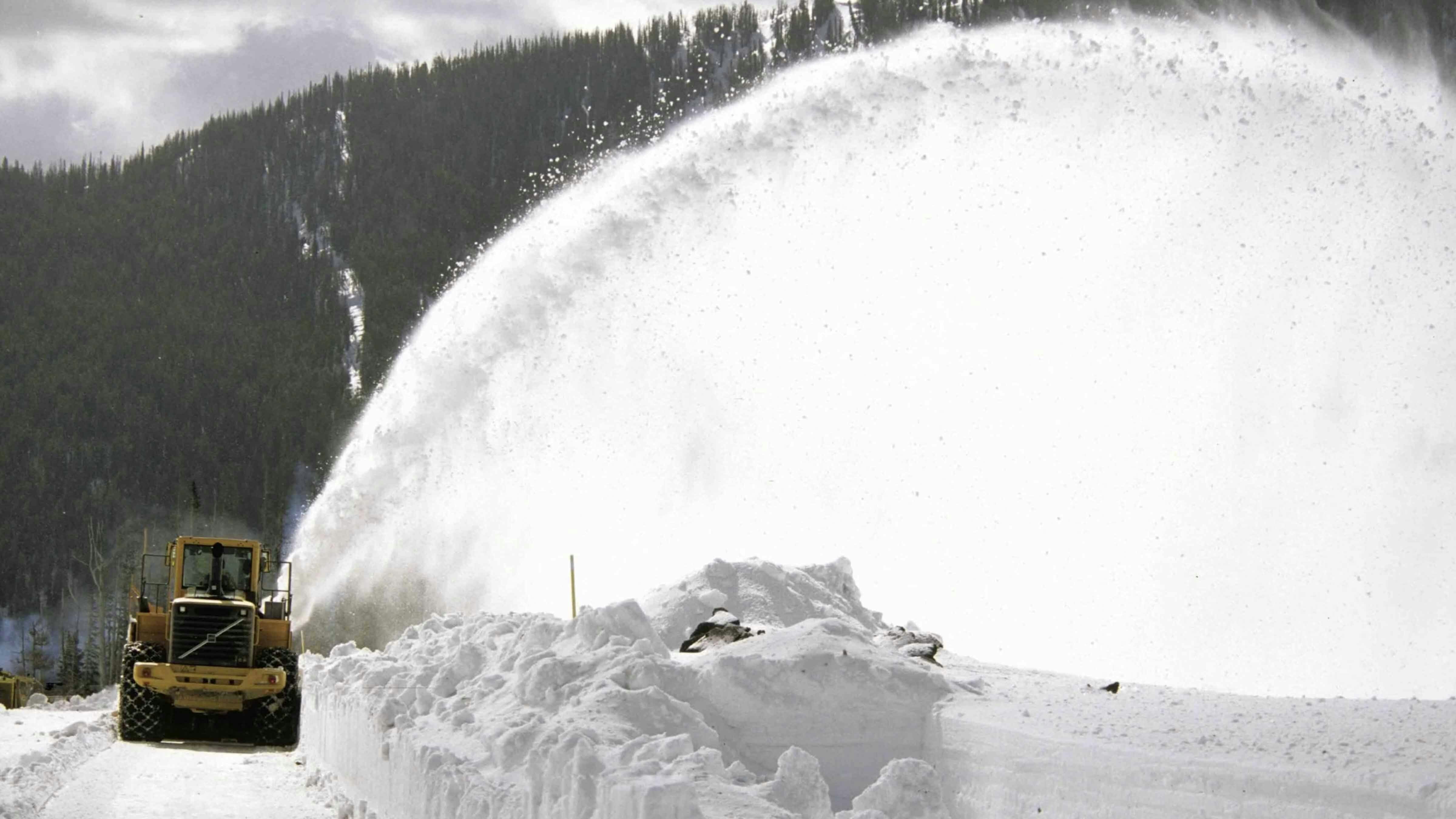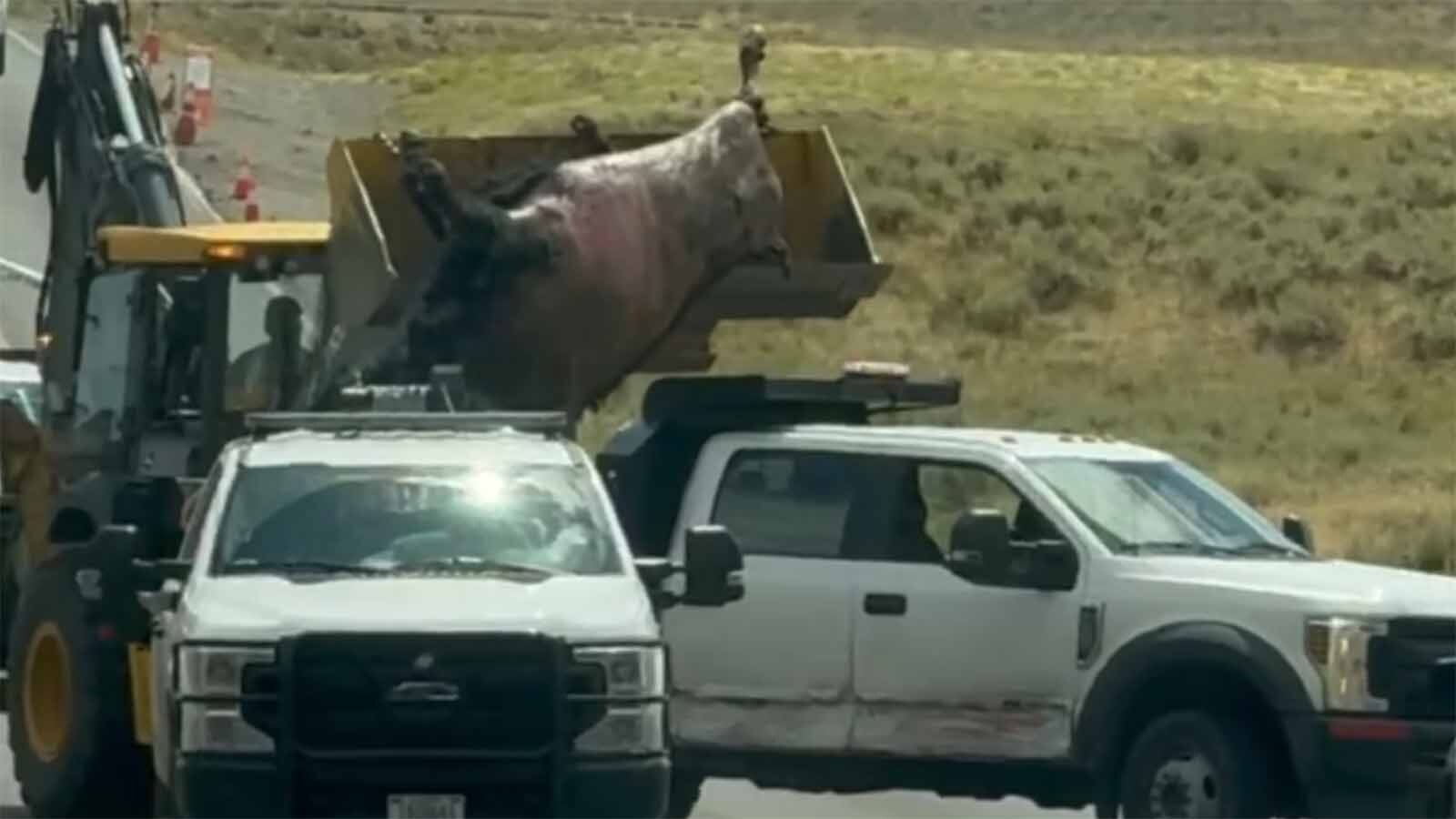Like the rest of Wyoming, Yellowstone National Park is still buried under a blanket of snow. But it won't be long -- another two weeks -- in fact, before roads are scheduled to begin to open to vehicle traffic.
"Roads in the park, weather permitting, considering how late winter is here this year, they'll start opening up April 21, said Linda Veress with Yellowstone's public affairs office. "And since it keeps snowing, crews are working really hard to clear the roads to get them open for visitors. So it's always good to check for updates."
But the opening of Yellowstone National Park to spring and summer visitors happens this year under the shadow of the major flood event that shut down the park in June of last year, and which had major repercussions on the rest of the summer season.
"The historic flood event in June washed out two roads in the park," Veress said, "the road from Gardiner, Montana, to Mammoth Hot Springs, and then the Northeast entrance road, from Tower Junction out to Cooke City."
She said park officials are more than ready for visitors this year, having recovered from June's disaster, and prepared for whatever this summer has in store.
"It's important to know that those roads will be open this summer," she said. "Actually, the Northeast entrance road access from Mammoth to Cooke city is open year round, and it's currently open."
Recovery
But opening that road involved a herculean effort, costing hundreds of man-hours and millions of dollars, in fact, according to some estimates, the final tally could be over $1 billion.
But Veress praised the various entities who worked tirelessly to ensure America's first national park was accessible to the 3.29 million visitors that did make their way to Yellowstone the rest of the summer.
"The staff did a great job coming together after the flood event last year," she said. "Everyone came together, and I feel we did a pretty good job getting the park reopened."
The Mammoth Hot Springs Hotel and other services in the park's administrative village are normally open year-round, but the flood damaged critical infrastructure, including wastewater facilities, causing those facilities to remain closed throughout the summer and this past winter.
Those necessary repairs have been completed, she said.
"The Mammoth Hotel, as well as the services in Mammoth, including the dining room and the grill, will be opening up this year in late April," she said.
There are several construction projects that will impact travel within Yellowstone this summer, though, but nothing unusual, Veress said, just necessary infrastructure updates for highways and bridges that handle over four million visitors each year.
"We will have some road improvement projects in place," she said. "There are four of them this year, affecting both the northern and the southern parts of the park, so we'd like visitors to know to plan ahead for these potential delays."
And Veress stressed that all roads within Yellowstone that were damaged in the flood have been repaired and are ready for the heavy traffic that each summer brings.
"There's some confusion that parts of the park are still closed," she said. "But we'd like everyone to know that the park is open this year–the road between Mammoth Hot Springs and Gardiner will be open this year, as well as the Northeast entrance road out to Cooke City."
Could Another Flood Happen?
Weather and snowpack conditions are similar this year to the setup last June that resulted in the one-in-500-years flood event on the morning of June 13, 2022.
Northern parts of the park had received a total of 7.5-9.5 inches of rain and snowmelt in the 24 hours prior to the flood–and this years deep snowpack, combined with the fact that the snow hasn't had a chance to melt off slowly this spring, is creating conditions that could replicate last year's disaster.
"This is what happens when you get rapid snowmelt with rainfall and warmer temperatures," said Cowboy State Daily meteorologist Don Day, speaking of last year's build up to the June 13 flood.
And because Wyoming's higher elevations haven't seen temperatures warm enough to begin melting the snowpack, should there be a sudden warming trend, that snow might result in flood conditions similar to last year.
"As long as we continue to see mountain snowpack grow and the lack of a consistent warming trend, then when it really starts to warm up, which is usually late April, into the month of May, you get a 24 hour melt cycle going," Day said. "And then if you put rain on top of that, which, May on average is one of the wetter months in Wyoming, I think the flooding potential is certainly elevated."
But in a worst-case scenario, Veress said Yellowstone staff and administrators will draw on the lessons they learned from last year's catastrophe.
"We learned a lot last year, and we'll be planning, in case an event like that happens again this year," she said. "We do experience these types of events from time to time, and we will be prepared."
Road Opening Schedule
If all goes according to plan, and road crews are able to dig out from this spring's snow, the West Entrance to Madison Junction, as well as roads from Mammoth Hot Springs to Old Faithful and from Norris Junction to Canyon will open to over-the-road traffic on April 21.
Two weeks later, on May 5, the East entrance road will open (weather permitting), followed by the South entrance and most of the interior roads on May 12.
Veress offered some words of advice for visitors who want to get the best experience from their time in America's first national park.
"Arrive to the park early, so lines will be shorter getting in and any delays will be minimized," she said. "The park is working hard to minimize any delays."
And Veress said staff is prepared to welcome guests with open arms.
"We're planning for a busy summer," she said. "We're hoping visitors will come and enjoy Yellowstone."





